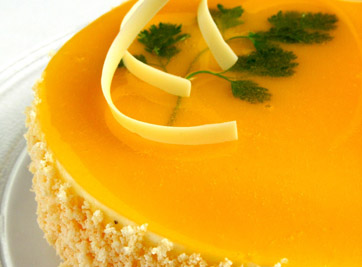
Identifiers
INS No. 160a(i); beta-Carotene (synthetic)
INS No. 160a(ii); Carotenes (vegetable)
INS No. 160a(iii); E160a(iii); beta-Carotene from Blakeslea trispora
INS No. 160(iv); beta-carotene-rich extract from Dunaliella salina
E160a(i); beta-carotene
E160a(ii); plant carotenes
E160a(iv); algal carotenes
CI Food Orange 5
Carotenes
Physical Description
β- Carotene is prepared synthetically or obtained from natural sources. Synthetic β- Carotene occurs as red crystals or as crystalline powder. It consists predominantly of all-trans-β-carotene, but may also contain minor amounts of cis-isomers and other carotenoids such as all-trans-retinal, beta-apo-12′-carotenal, and beta-apo-10′-carotenal.
Carotenes (vegetable) are obtained by solvent extraction of carrots (Daucus carota), oil of palm fruit (Elaeis guinensis), sweet potato (Ipomoea batatas) and other edible plants with subsequent purification. The main coloring principles are alpha-and β-Carotenes of which β-Carotene account for the major part. Carrot oil is the liquid or solid portion of the mixture or the mixture itself obtained by the hexane extraction of edible carrots.
β-Carotene from Blakeslea trispora occurs as red, brownish-red, or purple-violet crystals or as crystalline powder, with the color varying depending on the solvents used and the crystallization conditions. β-Carotene from Blakeslea trispora consists predominantly of all-trans-β-carotene, but may also contain minor amounts of cis-isomers and other carotenoids, of which γ-carotene is the most characteristic type.
β-Carotene-Rich Extract from Dunaliella salina is obtained by extraction from strains of the algae Dunaliella salina using the essential oil d-limonene. The extract is then prepared as a suspension in vegetable oil after removal of the essential oil. The main coloring principles are trans- and cis–isomers of ß-carotene together with minor amounts of other carotenes including α-carotene, lutein, zeaxanthin and cryptoxanthin.
Common Uses
β –carotene can be used in a wide range of food and beverages including cider, malt beverages, water-based flavored drinks, margarines, cheeses, cake fillings, custards, yogurts, processed nuts, precooked pastas and noodles.
Specifications
JECFA
- β-Carotene, synthetic
- Carotenes (Vegetable)
- β-Carotene from Blakeslea Trispora
- β-Carotene-Rich Extract from Dunaliella Salina
US FDA
Codex GSFA Provisions
Vegetablebeta-Carotenes and β –carotenes, including beta-Carotenes, Blakeslea trispora (INS No. 160a(iii), beta-Carotene-rich extract from Dunaliella Salina (INS No. 160a(iv)) and beta-Carotenes, synthetic (INS No. 160a(i)) are added to foods and beverages at concentrations in more than 70 food categories up to a maximum permitted level (MPL) as established by the Codex Alimentarius Commission and adopted in the General Standard of Food Additives.
Regulatory Approvals
Safety Reviews
Safety Evaluation of certain food additives (Eighty-seventh report of the Joint FAO/WHO Expert Committee on Food Additives) WHO Food Additive Series, No. 78, 2020. Available online
EFSA Panel on Food Additives and Nutrient Sources added to Food (ANS); Scientific Opinion on the reevaluation of Mixed Carotenes (E 160a (i)) and beta-Carotene (E 160a (ii)) as a food additive. EFSA Journal 2012;10(3):2593. [67 pp.] doi:10.2903/j.efsa.2012.2593. Available online